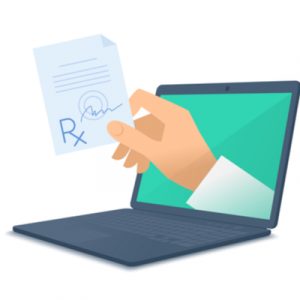E-prescribing: Barriers and opportunities

Electronic prescribing (also known as e-prescribing) is a system that enables providers in health care settings—e.g. doctors’ offices, hospitals, and long-term care facilities—to electronically write and store prescription information and send it directly to pharmacies.
There are two main types of e-prescribing systems:
- Systems integrated with electronic health records, which include comprehensive patient information.
- Stand-alone systems, which are less costly and easier to implement.
Some e-prescribing systems also include advanced features that allow health care providers to access generic medication alternatives, drug formularies (insurance benefit information), and patients’ medication lists and histories (to check for drug allergies and interactions). These advanced features have the potential to enhance physicians’ decision-making capabilities and increase their use of e-prescribing.
Advocates of e-prescribing tout its potential for improving patient safety and lowering health care costs. Research indicates that e-prescribing is indeed a useful intervention for reducing the risk of medication errors and adverse drug events in hospital settings and increasing the selection of effective, less costly medications for hospitalized patients, but there is less evidence of its effectiveness in reducing medication errors in ambulatory settings.
In the changing health information technology environment, various public-private collaboratives and state and federal initiatives are underway to encourage the adoption and use of e-prescribing among providers. In 2010, 25 percent of eligible prescriptions were sent electronically in the United States. Michigan ranks second in the U.S. for e-prescribing based on the following three factors in the e-prescribing process: 1) the percent of patient visits involving a prescription benefit request; 2) the percent of patient visits involving a medication history response; and 3) the percent of eligible prescriptions routed electronically. In Michigan, 20 percent of eligible prescriptions were ordered electronically in 2009, up from only 4 percent in 2007.
Although its use is increasing, providers continue to encounter significant barriers to the implementation and effective use of e-prescribing systems. It is important to understand these challenges in order to ensure the widespread adoption and effective use of e-prescribing.